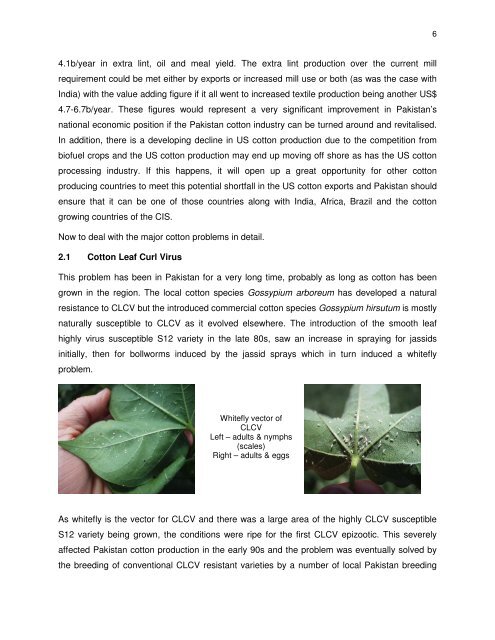ChangingCottonLandscapeNeilForrester
ChangingCottonLandscapeNeilForrester
ChangingCottonLandscapeNeilForrester
Create successful ePaper yourself
Turn your PDF publications into a flip-book with our unique Google optimized e-Paper software.
4.1b/year in extra lint, oil and meal yield. The extra lint production over the current mill<br />
requirement could be met either by exports or increased mill use or both (as was the case with<br />
India) with the value adding figure if it all went to increased textile production being another US$<br />
4.7-6.7b/year. These figures would represent a very significant improvement in Pakistan’s<br />
national economic position if the Pakistan cotton industry can be turned around and revitalised.<br />
In addition, there is a developing decline in US cotton production due to the competition from<br />
biofuel crops and the US cotton production may end up moving off shore as has the US cotton<br />
processing industry. If this happens, it will open up a great opportunity for other cotton<br />
producing countries to meet this potential shortfall in the US cotton exports and Pakistan should<br />
ensure that it can be one of those countries along with India, Africa, Brazil and the cotton<br />
growing countries of the CIS.<br />
Now to deal with the major cotton problems in detail.<br />
2.1 Cotton Leaf Curl Virus<br />
This problem has been in Pakistan for a very long time, probably as long as cotton has been<br />
grown in the region. The local cotton species Gossypium arboreum has developed a natural<br />
resistance to CLCV but the introduced commercial cotton species Gossypium hirsutum is mostly<br />
naturally susceptible to CLCV as it evolved elsewhere. The introduction of the smooth leaf<br />
highly virus susceptible S12 variety in the late 80s, saw an increase in spraying for jassids<br />
initially, then for bollworms induced by the jassid sprays which in turn induced a whitefly<br />
problem.<br />
Whitefly vector of<br />
CLCV<br />
Left – adults & nymphs<br />
(scales)<br />
Right – adults & eggs<br />
As whitefly is the vector for CLCV and there was a large area of the highly CLCV susceptible<br />
S12 variety being grown, the conditions were ripe for the first CLCV epizootic. This severely<br />
affected Pakistan cotton production in the early 90s and the problem was eventually solved by<br />
the breeding of conventional CLCV resistant varieties by a number of local Pakistan breeding<br />
6


